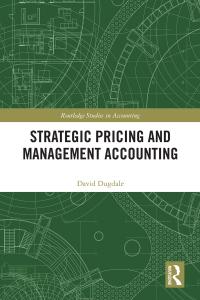Question
CASE 1: KENT IMPORTS LTD. Albert Cunningham began his career as a manufacturers representative in the medical equipment business. Included in his lines were products
CASE 1: KENT IMPORTS LTD. Albert Cunningham began his career as a manufacturers representative in the medical equipment business. Included in his lines were products imported from several European manufacturers. Alberts business gradually evolved into Kent Imports Ltd., a wholesaling business that bought medical equipment from European manufacturers and sold it to retailers through a sales organization. By purchasing medical equipment in large quantities from European manufacturers, Kent Imports was able to negotiate favourable prices and reduce shipping costs substantially. Furthermore, the company was able to ensure delivery to customers because orders could be filled from a Toronto warehouse rather than from a European location. In 2010, Albert retired and turned over his business to his son, David. At that time, revenue had reached $13 million a year and profit for the year was in excess of $400,000. By late 2012, David could see that revenue for the year was going to be less than $12 million and that profit would be about $200,000. He decided to hire a marketing manager who could boost revenue quickly. David contacted an executive placement firm, which recommended Ross Belman. Belman had a record of frequent job changes but had produced very rapid revenue increases in each position. He stayed with Kent Imports Ltd. for only 12 months (leaving in November 2013). In that short time, Belman was able to increase revenue from $12 million to more than $18 million. Furthermore, profit for the year soared by 273%. Even when Belman announced his resignation to take another position with a larger company, David felt the decision to hire him had been a good one. David contacted the executive placement firm once again. This time the firm recommended Helen Tang, a dynamic woman who was currently a district sales manager for another import manufacturer. Helen was very interested in the job because it would give her greater marketing responsibilities. Helen asked David what policy changes Ross Belman had implemented to increase revenue so dramatically. David explained Belmans belief that merchandise availability was the key to medical equipment import sales. Belman had insisted on increases in the amount of inventories carried by Kent Imports and had encouraged medical equipment retailers to carry more by extending more generous credit terms. Specifically, he established an unofficial policy of not pressing for collection as long as the merchandise was still in a stores inventories. The sales representativeswho were paid a commission at the time of salewere responsible for reporting what inventories the stores actually held. In addition, Belman changed the credit standards so that the company could approve more new stores for credit. He felt that the old policy was biased against these new retail stores because they did not have a track record. Willingness to sell to this group had accounted for nearly half of the total revenue increase. Helen asked if this policy had weakened the companys trade receivables, particularly the cash flow position. David responded that he had been monitoring the average collection period very closely and there had been only a very slight change. Helen told David that although she was very interested in the position, she could not make a decision until she had looked at the companys financial statements. David was hesitant to show this information to an outsider, but he finally agreed to let her look at the records in the office. He allowed Helen to look at the statements of income and the statements of financial position. She did her own analysis of the companys financial statements in addition to determining to what extent the working capital policies actually helped improve Kent Imports overall financial performance. Questions 1. Do you agree with David Cunningham that the quality of the working capital accounts (inventories and trade receivables) showed only a slight change? 2. Comment on the companys overall financial performance for 2012 and 2013, particularly as it relates to the (1) liquidity ratios, (2) debt/ leverage ratios, (3) asset-management ratios, and (4) profitability ratios. 3. Did the companys DWC and CCE ratio improve when Ross Belman was the marketing manager? 4. Did David do the right thing by hiring Ross Belman? Kent Imports Ltd. Statements of Income For the year ended December 31 (in $000s) 2012 2013 Revenue 11,800 18,600 Cost of sales (8,500) (13,200) Gross profi t 3,300 5,400 Expenses Distribution costs (1,100) (1,620) Administrative expenses (1,500) (2,100) Depreciation/amortization (200) (300) Finance costs (200) (320) Total (3,000) (4,340) Profi t before taxes 300 1,060 Income tax expense (110) (350) Profi t for the year 190 710 Kent Imports Ltd. Statements of Financial Position As at December 31 (in $000s) 2012 2013 Non-current assets (at cost) 2,900 3,700 Accumulated depreciation/amortization (800) (1,100) Non-current assets (net) 2,100 2,600 Current assets Inventories 2,100 3,600 Trade receivables 1,600 2,100 Prepaid expenses 100 70 Cash and cash equivalents 160 240 Total current assets 3,960 6,010 Total assets 6,060 8,610 Equity Share capital 1,500 1,500 Retained earnings 2,100 2,810 Total equity 3,600 4,310 Long-term borrowings 1,300 1,800 Current liabilities Trade and other payables 850 1,400 Short-term borrowings 310 1,100 Total current liabilities 1,160 2,500 Total liabilities 2,460 4,300 Total equity and liabilities 6,060 8,610 Note: In 2011, the companys net working capital was $2,700,000.
Step by Step Solution
There are 3 Steps involved in it
Step: 1

Get Instant Access to Expert-Tailored Solutions
See step-by-step solutions with expert insights and AI powered tools for academic success
Step: 2

Step: 3

Ace Your Homework with AI
Get the answers you need in no time with our AI-driven, step-by-step assistance
Get Started


